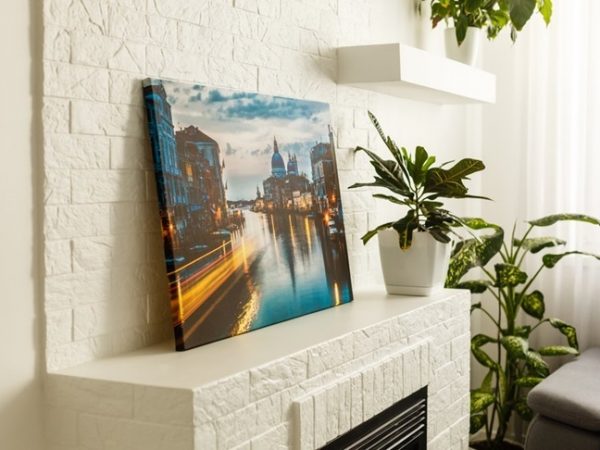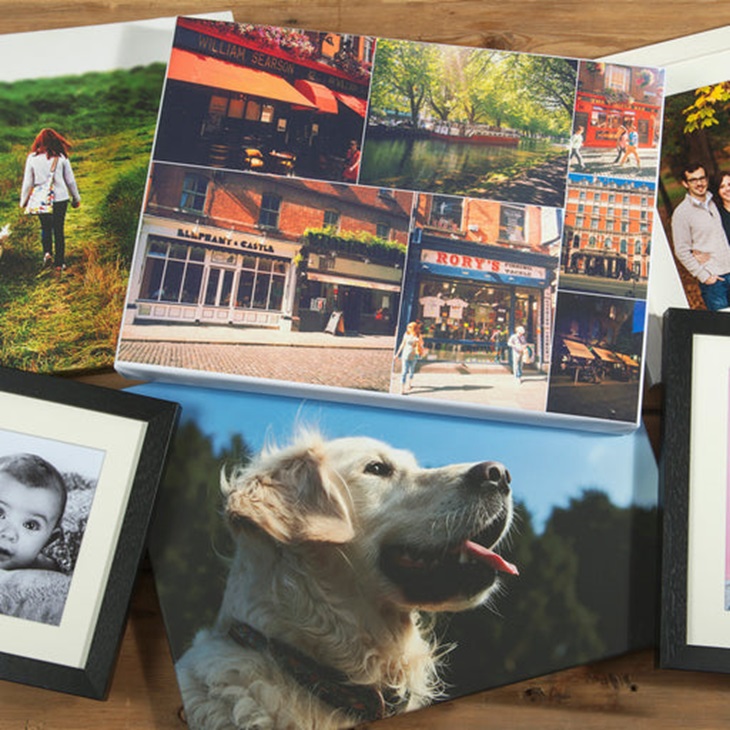09
Aug

Photos taken on the spur of the moment are frequently the most memorable, capturing those wonderful moments that make you grin. Because you’ve taken so many wonderful everyday and travel photos, printing them from your phone is the perfect way to preserve all the happy moments, big smiles, and incredible memories saved on your camera roll. But, with so many mathematical nuances and aesthetic options, it might be tough to choose which option is best.

Turn your favourite smartphone images into a wall or décor art with the convenience of an online print and frame photos service. If you are unsure where to start, we are breaking down the three simplest ways to an outstanding online photo printing and framing.
Online custom printing and framing are now easier than ever. All you have to do is upload the image from your smartphone, crop it in the shape you want, and select a frame. However, when picking the right frame that will suit your décor needs and preferences, there are some important factors to consider before purchasing.
Of course, one the most crucial factors when picture printing and framing online is the function of the digital photo and the importance of protecting it. If you have something minor or unimportant that can be trimmed to size or simply has to be temporarily framed, you could be better off buying a stock, standard-size frame from practically any big retailer. Custom picture framing is the way to go for anything that is valuable to you and comes in a non-standard size since you will have more alternatives to pick from.
The material is the next big thing to think about when you print and frame photos. Wood and metal are the two main options. Solid wood is typically the most expensive, high-maintenance, and least “eco-friendly” alternative.
Unlike solid wood, medium-density fibreboard (MDF) is the more affordable. Because it is a recycled wood substance made of sawdust compacted with a binder and wrapped for a uniform finish, it is frequently the most environmentally friendly option as well.
It’s also simple to care for. Finger-jointed poplar is a good compromise between solid wood and MDF. While MDF is a recycled wood material, it is closer to solid wood because it is formed from discarded wood pieces that are bonded and linked together. Most metal frames are made from aluminium, a lightweight material that can be extruded, moulded, and coloured.
Matting, also known as “Mat(s)” or “Matboard(s)”, is a decorative liner that you insert inside your frame. It might complement or contrast the colour in your artwork that you want to highlight, or it can just add elegance to your presentation. Remember that the inclusion of a matboard expands the total dimensions of your frame, as the opening of your matting becomes the window through which you view your artwork. To avoid “falling through” and exposing the backing, open your mat board with a 1/4″ overlap with your artwork’s edges.
Glass is perhaps the most common frame cover option, but it is also the most fragile one. While it is less prone to scratching, it is nevertheless more likely to shatter. Acrylic is increasingly becoming a popular alternative for picture frame covers because it is not only more durable but also lighter.
You will also have to make an informed decision about the type of finish cover you will want. You have two options at your disposal: clear and glare. As the name suggests, the former is crystal clear, like looking through a window, whereas the latter lightly diffuses and softens the colour of your artwork to prevent extreme glare from direct light sources.
While the backing is rarely a strong contributor to your frame aesthetic, it should always be a highly functional component. If you want to safeguard and preserve your print and frame for years to come, cardboard is undoubtedly an outdated backing material choice.
Plastic typically produces double-sided frames without a “back,” but any side might be designated as such. Plastic has many of the advantages of cardboard, including great durability, low cost, and light weight. Foamcore is the most popular of the three backing options. The material is lightweight, acid-free, and easy to cut, making it great for any picture size.
Online printing and framing services also offer the ready-made frame option. Unlike customisable frames, you can enjoy a wide selection of different sizes and shapes as well as materials. You should pick the frame option that works for you, upload your favourite photo and add the frame to your cart. As simple as that.
Purchasing a bespoke frame in person is the traditional option, but it is more money and time-consuming. You will have to get in your car and go to the store multiple times, rather than ordering from your phone or computer. The upside here, however, is that you can see the entire product selection in front of you, eliminating the possibility of a miscommunication about what you’re ordering.